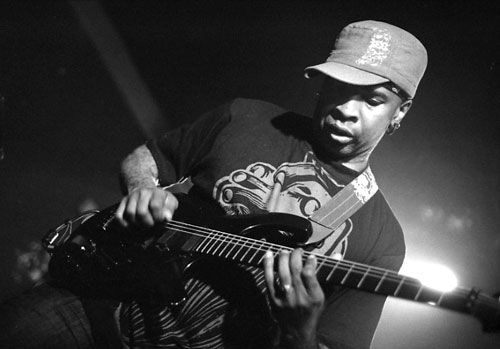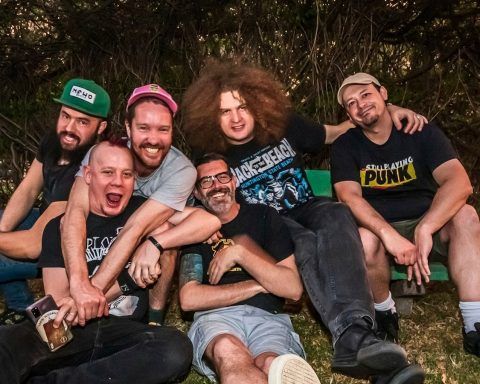Guitar World magazine’s official website has posted an archived interview from 1988 with LIVING COLOUR guitarist Vernon Reid, conducted by Chris Jisi.
How were your solos recorded, and is there a personal favorite?
“Cult Of Personality” was a first take, as was “Funny Vibe.” “Desperate People” wasn’t a first take, but none of the solos were stitched together. I purposely had our producer turn off my rhythm tracks and just send bass and drums when I recorded my solos. I wanted to keep a raw edge. I like the “Cult” solo because I felt I was able to connect with the lyrics and feel of the song. I like “Funny Vibe,” “Memories Can’t Wait” and “Which Way To America” because there’s something out of control about them. I’m not an every-hair-in-place kind of player.
How have non-guitar influences like Eric Dolphy affected your style?
Well, I don’t play like Eric Dolphy, but technically, his incredible use of interval skips is something I try to apply, specifically in the “Cult Of Personality” solo. I have a book by Joe Diorio called Intervallic Design which addresses how to use interval skips smoothly.
When I studied with Rodney Jones, Bruce Johnson and Ted Dunbar, they had me play with a metronome on 2 and 4, which exposed me to the concept of swinging. I still practice with a metronome. Right now, a lot of people are playing very diatonically and modally. Even the arpeggios sound diatonic. I incorporate that, as well as pentatonic, chromatic and whole-tone ideas, and I like to experiment with moving tonal centers which I learned about while working with the Decoding Society.
How do you approach soloing?
My best solos come when I get into a stream of consciousness and there are no stylistic considerations like, “Now I’m going to use some two-handed tapping technique or play a hip bebop phrase.”
There are times when you can feel yourself thinking things out, but for the most part, if you’re in touch with your capabilities, ideas will begin to flow. What musicians don’t realize is that as you play over a long period of time, you pick up a lot of things. If you could unlock what you’ve learned from the time you started playing, you would be amazed.
How do you unlock that knowledge?
When you practice, you should touch on different things: chords, arpeggios, linear things, diatonic and chromatic ideas, rhythm playing, melodies, the blues. Then, when you let yourself go in performance, you’ll be cross-referencing and referring back to those things unconsciously. Once you do the conscious work, you just have to let the sub- or unconscious take hold. Therefore, it’s important to immerse yourself in as many different styles of music as possible. If a young player wants to dig deeply into the classical music approach to metal guitar, that’s fine — it’s great music. What I question are guitarists who use technique to make themselves invincible — an “I’m gonna blow you away with my chops” attitude. The real battles are within yourself, not in impressing others.
Listen to people who use space in their solos, like Wayne Shorter and Sonny Rollins, who are two of our greatest living improvisers. And after you check out their use of space, phrasing and note selection, try and capture their overall feeling and spirit. Too often the term “playing with feel” means playing without technique, but that’s a misconception. Take Allan Holdsworth, for example. I get such an emotional lift from his work because I can feel him searching and reaching out. There is a bridge between technique and emotional commitment.
Often, people refer to their solos as having a beginning, middle and end, typically starting off slowly and building to a peak, perhaps with a downside after the climax.
I view a solo as a conversation during which I strive to make interesting statements. I dread moments when I fall back on rote licks — and in rock there are plenty of them — but when you use those same licks on an unconscious level, they work.
I’ve always believed that extremely gifted people use a little more of their head and heart than the average person. As a soloist and a musician, that’s something to keep in mind.
LIVING COLOUR live:














